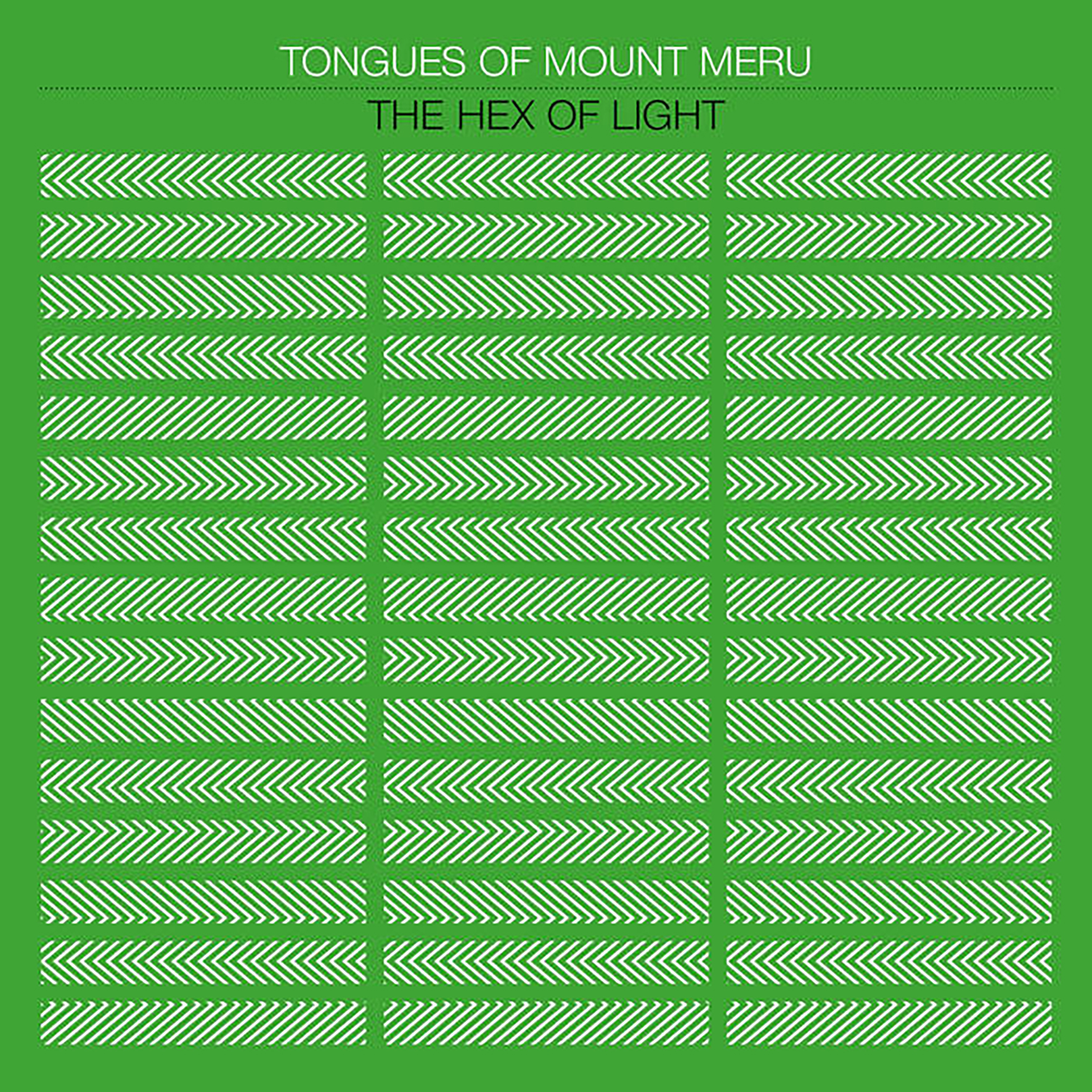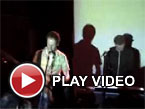Tongues of Mount Meru, "The Hex of Light"
 This latest release from Jon Wesseltoft and Lasse Marhaug's long-running (if fitful) drone project was recorded all the way back in 2013, which makes for quite a perplexing mystery, as I cannot understand why such a great album would remain on the shelf for so many years (especially since Marhaug himself runs a label). Most likely, however, The Hex of Light was simply the victim of Marhaug's incredibly prolific output, as well as Mount Meru's tendency to bounce from label to label with every release. Also, it appears as though this project was either on hiatus or completely defunct for quite some time, though Wesseltoft and Marhaug have performed together in Meru-esque form as recently as 2016. Aside from that, it is probably also safe to say that Wesseltoft poured quite a lot of time into mastering and editing this monster, as The Hex of Light's two longform pieces represent crushingly dense and mind-melting drone heaviness at its absolute best.
This latest release from Jon Wesseltoft and Lasse Marhaug's long-running (if fitful) drone project was recorded all the way back in 2013, which makes for quite a perplexing mystery, as I cannot understand why such a great album would remain on the shelf for so many years (especially since Marhaug himself runs a label). Most likely, however, The Hex of Light was simply the victim of Marhaug's incredibly prolific output, as well as Mount Meru's tendency to bounce from label to label with every release. Also, it appears as though this project was either on hiatus or completely defunct for quite some time, though Wesseltoft and Marhaug have performed together in Meru-esque form as recently as 2016. Aside from that, it is probably also safe to say that Wesseltoft poured quite a lot of time into mastering and editing this monster, as The Hex of Light's two longform pieces represent crushingly dense and mind-melting drone heaviness at its absolute best.
This project first surfaced back in 2009 with an LP on Important Records (The Ocean of Milk) and has had quite a strange and confounding trajectory ever since, leaving behind just a small handful of limited physical releases documenting only a few short years of activity.As a result, it impossible for me to tell exactly how much the project has evolved since its beginning and I also have no idea if this release is a mere vault-clearing or a sign that Wesseltoft and Marhaug have rekindled their great partnership anew.I am naively hoping for the latter, as it is rare to find two artists so perfectly intertwined and single-mindedly focused on achieving something so nightmarishly monolithic (or succeeding so beautifully).Obviously, both artists are Norwegian and share long histories in extreme music, so it was inevitable that they would cross paths, but Mount Meru was born specifically from a shared desire to "explore their mutual interest in long-form music, psycho-acoustics, the phenomenology of sound, and its correlation to perception."Based on The Hex of Light, it is clear that the duo took that interest in psycho-acoustics very seriously, as it feels wildly misleading to describe this album as anything akin to a "drone album" in the conventional sense.Instead, drones are merely the structural framework that the pair use to unleash two truly harrowing slabs of squirming and buzzing heavy psych.
Of the two pieces, the opening "Foliage" is by far the most harrowing, as it instantly resembles an impossibly dense mass of infernal, hallucinatory crickets whose chirps smear and bleed together into a sickly, buzzing swirl.And in a broad sense, that is exactly where it lingers for the next nineteen minutes, as Wesseltoft and Marhaug seem perfectly content to maintain that unbroken, squirm-inducing tension and seem decidedly disinterested in providing any respite in the form of a chord change or convergence upon any non-dissonant harmonies.When it comes to the details, however, "Foliage" is a mesmerizingly rich, dynamic, and endlessly evolving piece, as new patterns of throbs, pulse, sweeps, and oscillations continually form and dissipate in the queasy maelstrom of sinister buzzing.That said, a gently undulating organ drone gradually becomes more and more prominent as the piece unfolds, resulting in a final stretch that feels weirdly meditative despite its sinister, churning undercurrent.Notably, the album's two pieces were designed to "reflect into each other," so the following "Affinity Birds" opens as a slowly undulating and calm mass of buzzing drones, then grows steadily more gnarled, ugly, and unsettling as close harmonies increasingly amass and linger malevolently.By the time it reaches the end, all of the grounding bass tones have vanished, leaving only an infernal and ghostly insectoid hum of clashing tones.The symmetry is perfect, as the album opens as a nightmare, fleetingly blossoms into something almost beautiful, then steadily dissolves into an even deeper nightmare.
If I had to choose a kindred spirit for The Hex of Light, the album that immediately springs to mind is Catherine Christer Hennix's landmark The Electric Harpsichord, as the two share a similarly nerve-jangling approach to harmony.I have no idea if Wesseltoft and Marhaug dabbled in Just Intonation themselves, but it does not matter, as they certainly manipulated microtonal shifts effectively enough to make their harmonies every bit as alien and disorienting as those of Christer Hennix. The similarities between the two album go deeper than their similarly drone-based structure and unconventional approach to harmony, however, as The Hex of Light evokes a similarly phantasmagoric, timeless, and ritualistic scene.Granted, modular synths are a bit more anachronistic for an ancient temple than a harpsichord, but the illusion manages to hold up regardless (presumably since the duo seem to use synths or synth-like sounds solely because of the degree of microtonal control they offer).I am always reluctant to embark upon indulgent poetic fancies when describing an album, but I think such a thing is warranted here, as more prosaic language feels hopelessly inadequate in conveying the scope of The Hex of Light's power and mystique.This album's diabolical, chittering thrum feels exactly like the sounds I would expect to be gnawing at my sanity if I were a feverish and malarial explorer desperately trying to escape a cursed jungle after stumbling upon a horrifying occult ritual.
Samples can be found here.



